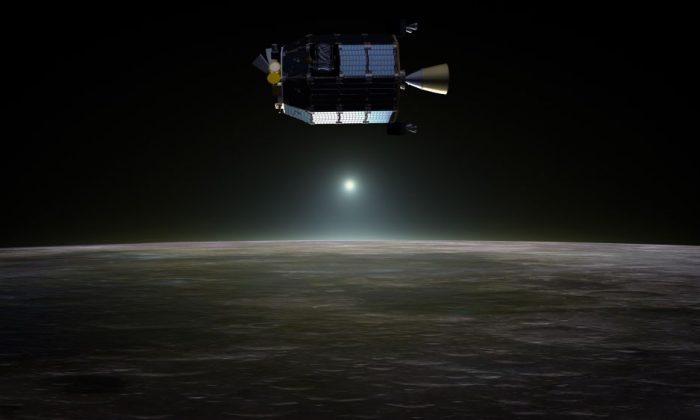In 1997, three Yemenis sued NASA for trespassing with its Mars Rover, claiming they had inherited Mars from their ancestors 3,000 years ago. In 2004, Gregory W. Nemitz of Carson City, Nev., sued NASA for landing on what he claimed was his asteroid.
Since 1968, Dennis Hope of Gardnerville, Nev., has sold millions of acres of extraterrestrial land.
So who owns the moon, Mars, asteroids, and other barren-yet-potentially-lucrative parts of the final frontier?
An international space treaty prevents countries from staking their claim, but the law on private ownership is unclear. It remains to be seen whether courts will uphold any deeds issued by companies such as Hope’s Lunar Embassy Corp.
Hope’s plots are sold for about $20 a piece. Many people buy plots on the moon as a novelty item, but that doesn’t mean some won’t try to make good on their claims in the future.
While the planets may one day have tourist or colonial appeal, asteroids have a clear and present value—mineral wealth.
NASA is working on plans already to pull an asteroid in closer to the moon and see if its resources can be harvested to make rocket fuel.
Martin Elvis, an astrophysicist at the Harvard-Smithsonian Center for Astrophysics, has estimated that the value of minerals in near-Earth asteroids is anywhere from $800 million to $8.8 billion. His study, due to be published in the journal Planetary and Space Science, notes that fewer near-Earth asteroids than previously thought are likely lucrative mineral sources.
The wide range in his estimation signals a need for further research.
Nemitz had claimed ownership of asteroid 433, also known as Eros, because he had discovered it. NASA landed a robot on the asteroid in 2001, and Nemitz sued. The U.S. District Court in Reno ruled the claims could not stand, “for lack of a recognizable legal theory,” according to a San Francisco Gate report from the time.
Adam Ismail, Mustafa Khalil, and Abdullah al-Umari, had said their ancestors left them ownership of Mars 3,000 years ago and that they had documents to prove it. Their case, filed in a Yemeni court, didn’t hold.
But the once semi-hypothetical field of space law is becoming increasingly tangible, and perhaps urgently so. The Earth has seen many wars over territorial disputes. When it comes to moving asteroids around to get at their resources, safety is also a concern.
Outer Space Treaty of 1967 was meant to stave off territorial disputes over the moon. The changing nature of the space race has opened the question of whether an asteroid can be considered a “celestial body,” as discussed in the treaty.
In a Seattle University Law Review article, Andrew Tingkang argued that if it can be moved, it isn’t a celestial body. Thus, asteroids could be fair game.
Eligar Sadeh at the Department of Space Studies, University of North Dakota wrote in an article for the journal Space Policy, that space property could be treated like the deep sea. A treaty could be modeled on the U.S. Deep Seabed Hard Mineral Resources Act of 1980.
The rights of companies to mine the deep sea bed were protected, though it was agreed that no one owns the territory. Sadeh explained: “With this approach there is no actual ownership or ’real' property rights to the seabed, but a right of use.”
Rosanna Sattler noted in a Chicago Journal of International Law article that a major corporation “is not going to invest millions and millions of dollars for a communications system on the moon if there’s no law up there to protect their assets.”
MORE:
The New Space Race: Privatization Drives Competition
Everything You Ever Wanted to Ask an Astronaut: Exclusive Interview With NASA Astronaut Tom Jones
*Illustration of the moon surface and Earth via Shutterstock






Friends Read Free